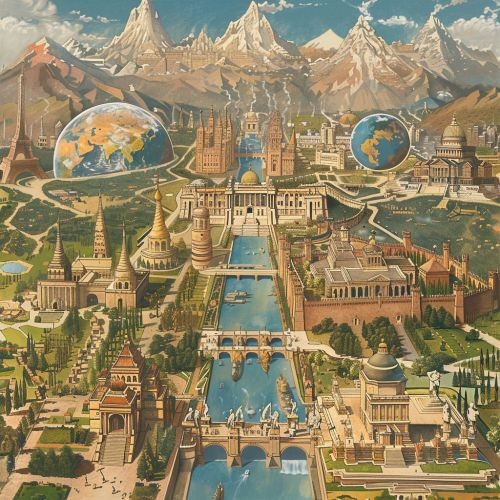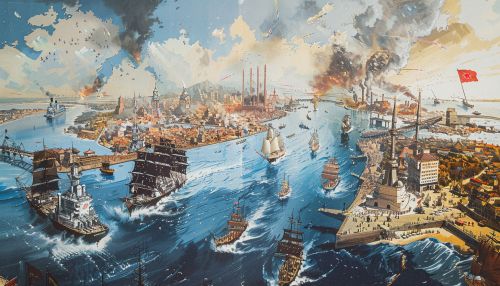Power transition theory
Power Transition Theory
Power Transition Theory is a central concept in the field of international relations that seeks to explain the dynamics of global power shifts and the potential for conflict that arises during these transitions. Developed primarily by A.F.K. Organski in the mid-20th century, this theory posits that the likelihood of major wars increases when a challenger state approaches parity with the dominant global power. This article delves into the intricacies of Power Transition Theory, its historical context, its key components, and its implications for contemporary international politics.


Historical Context
Power Transition Theory emerged during the Cold War, a period characterized by intense rivalry between the United States and the Soviet Union. The theory was a response to the limitations of Balance of Power theory, which suggested that equilibrium among states would lead to stability and peace. Organski argued that this view was overly simplistic and failed to account for the dynamic nature of power shifts in the international system.
The theory draws on historical examples such as the rise of Germany in the late 19th and early 20th centuries, which challenged British hegemony and ultimately led to World War I. Similarly, the rise of the United States and the Soviet Union as superpowers after World War II exemplified the potential for conflict inherent in power transitions.
Key Components of Power Transition Theory
Dominant Power
The dominant power, or hegemon, is the state that holds the most significant amount of power in the international system. This power is not only military but also economic, political, and cultural. The hegemon sets the rules and norms that govern international relations and maintains a status quo that benefits its interests.
Challenger State
A challenger state is one that is rapidly increasing its power and approaching parity with the dominant power. This state is often dissatisfied with the existing international order and seeks to revise it to better reflect its interests and values. The rise of a challenger state is a critical factor in power transition theory, as it introduces the potential for conflict.
Parity and Power Transition
Parity occurs when the challenger state's power approaches or equals that of the dominant power. According to Power Transition Theory, this is the most dangerous period in the international system, as the challenger may attempt to alter the status quo through coercion or war. The dominant power, in turn, may seek to preemptively strike to maintain its position.
Satisfaction with the Status Quo
The level of satisfaction with the status quo is a crucial variable in Power Transition Theory. If both the dominant power and the challenger are satisfied with the existing order, the likelihood of conflict decreases. However, if the challenger is dissatisfied, the probability of conflict increases as it seeks to change the international system to its advantage.
Implications for International Relations
Power Transition Theory has significant implications for understanding the causes of war and the conditions for peace. It suggests that periods of power transition are inherently unstable and prone to conflict. This has led scholars and policymakers to focus on managing these transitions to prevent war.
Preventive War
One of the most controversial implications of Power Transition Theory is the concept of preventive war. This is the idea that the dominant power might initiate conflict to prevent the challenger from achieving parity. Historical examples include the Peloponnesian War, where Sparta sought to curb the rising power of Athens, and the preemptive strategies considered by the United States during the Cold War.
Peaceful Transitions
While Power Transition Theory often emphasizes the potential for conflict, it also explores the conditions under which peaceful transitions can occur. Factors such as economic interdependence, international institutions, and diplomatic engagement can mitigate the risks associated with power transitions. The peaceful rise of Germany and Japan as economic powers in the post-World War II era illustrates how integration into the international system can facilitate peaceful transitions.
Criticisms and Debates
Power Transition Theory has been subject to various criticisms and debates within the field of international relations. Critics argue that the theory is overly deterministic and fails to account for the agency of states and leaders. Others contend that it underestimates the role of international institutions and norms in mitigating conflict.
Determinism and Agency
One of the primary criticisms is that Power Transition Theory is overly deterministic, suggesting that conflict is an inevitable outcome of power transitions. Critics argue that this perspective neglects the agency of states and leaders, who can make strategic choices to avoid conflict. For example, the peaceful end of the Cold War and the subsequent integration of former Soviet states into the international system demonstrate that power transitions can be managed without resorting to war.
Role of International Institutions
Another critique is that Power Transition Theory underestimates the role of international institutions in maintaining stability. Institutions such as the United Nations, the World Trade Organization, and regional organizations like the European Union play a crucial role in managing power transitions by providing forums for negotiation, dispute resolution, and cooperation. These institutions can help to mitigate the risks associated with power transitions by promoting dialogue and cooperation among states.
Economic Interdependence
Economic interdependence is another factor that can influence the dynamics of power transitions. Critics argue that Power Transition Theory does not adequately account for the ways in which economic ties can reduce the likelihood of conflict. States that are economically interdependent are less likely to engage in conflict, as war would disrupt mutually beneficial economic relationships. The rise of China as an economic power and its integration into the global economy is often cited as an example of how economic interdependence can contribute to a peaceful power transition.
Contemporary Relevance
Power Transition Theory remains highly relevant in the contemporary international system, particularly in the context of the rise of China and the relative decline of the United States. Scholars and policymakers are keenly interested in understanding whether this transition will lead to conflict or whether it can be managed peacefully.
The Rise of China
China's rapid economic growth and increasing military capabilities have positioned it as a potential challenger to U.S. hegemony. This has led to significant debate about whether the U.S. and China are destined for conflict or whether they can find ways to coexist peacefully. The concept of the Thucydides Trap, which suggests that rising powers inevitably clash with established powers, has gained prominence in this context.
U.S. Strategy
The United States' strategy in response to China's rise has involved a combination of engagement and containment. On one hand, the U.S. has sought to integrate China into the global economy and international institutions. On the other hand, it has also strengthened alliances and increased its military presence in the Asia-Pacific region to counterbalance China's growing influence.
Regional Dynamics
The rise of China has also had significant implications for regional dynamics in Asia. Countries such as Japan, South Korea, and India have adjusted their foreign policies in response to China's growing power. These regional dynamics are crucial for understanding the broader implications of power transitions in the international system.
Future Directions
Power Transition Theory continues to evolve as scholars seek to refine its concepts and apply them to contemporary issues. Future research may focus on the role of technology, environmental challenges, and non-state actors in shaping power transitions.
Technological Change
Technological advancements, particularly in areas such as artificial intelligence, cyber warfare, and space exploration, are likely to play a significant role in future power transitions. These technologies can alter the balance of power and create new opportunities and challenges for states. Understanding how technological change interacts with power transitions is a critical area for future research.
Environmental Challenges
Environmental challenges, such as climate change and resource scarcity, are also likely to influence power transitions. These challenges can exacerbate existing tensions and create new sources of conflict. Conversely, they can also provide opportunities for cooperation and collective action. Examining the impact of environmental challenges on power transitions is an important area for future study.
Non-State Actors
Non-state actors, including multinational corporations, international organizations, and transnational advocacy networks, play an increasingly important role in the international system. These actors can influence power transitions by shaping norms, providing resources, and facilitating cooperation. Future research should explore the role of non-state actors in power transitions and their potential to contribute to stability or conflict.
Conclusion
Power Transition Theory offers a valuable framework for understanding the dynamics of global power shifts and the potential for conflict that arises during these transitions. While the theory has its limitations and has been subject to various criticisms, it remains a central concept in the field of international relations. As the international system continues to evolve, Power Transition Theory will continue to provide insights into the causes of war and the conditions for peace.
